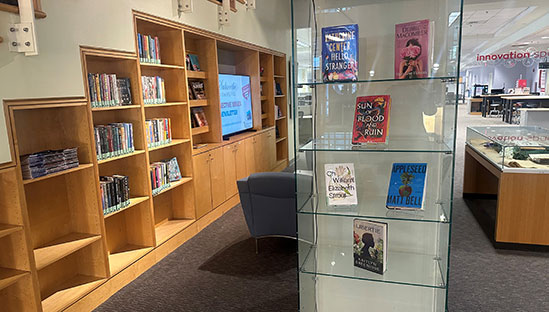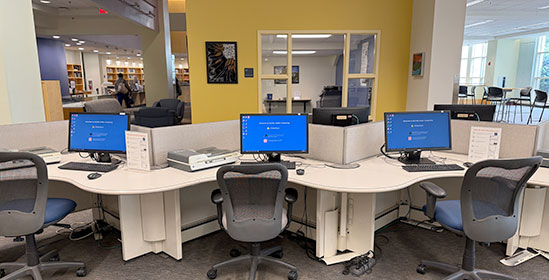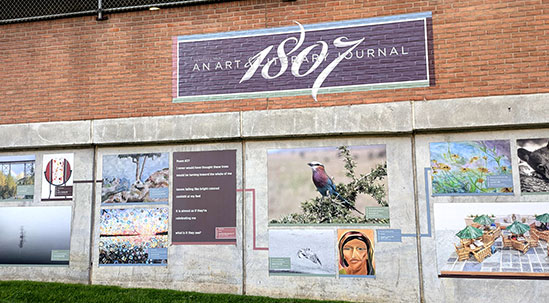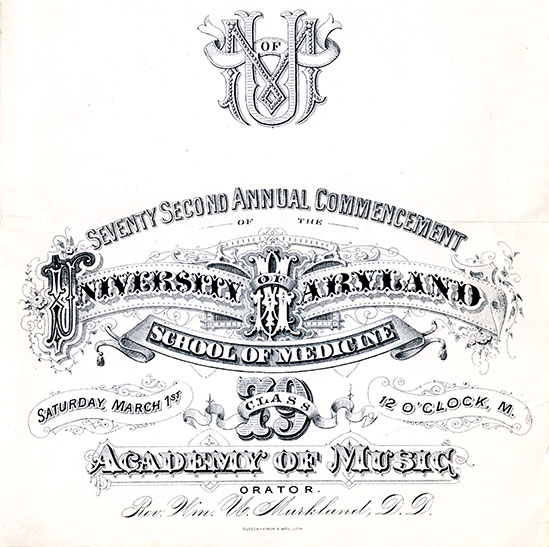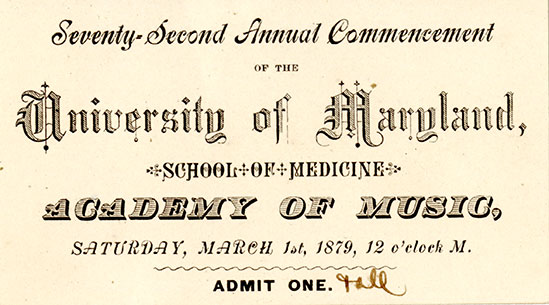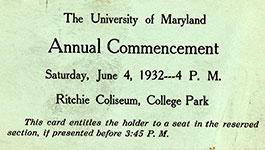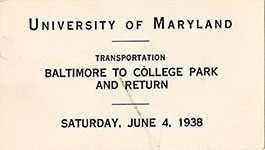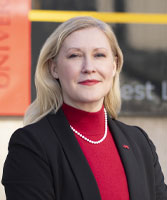
I am pleased to welcome new and returning faces to the University of Maryland, Baltimore (UMB), Health Sciences and Human Services Library (HSHSL) for the Fall 2025 semester. I am excited to continue our record of excellence and success into the fall with new programs and projects that will benefit our library users.
One of the ongoing projects I am happy to provide updates on is the HSHSL restroom renovation work. This project continues, with only the Second and Third Floors remaining. The completed renovations have been well received: we have already heard directly from students and employees how happy they are with the new look. We hope to recognize the excellent work of our facilities team with a ribbon cutting event before the end of the year. Look for forthcoming announcements about this event.
You will also see new signage around the Library this fall. From print to digital signs, the HSHSL is hoping to communicate news and events with users in new and innovative ways. As part of the restroom update, the “HSHSL on the Go” newsletter was also reformatted. The new, larger format “HSHSL on the Go” will allow the HSHSL Communications Team to provide more information about events, and even the opportunity for some guest columns in the future. The HSHSL Communications Team is still working to find the best way to attach the new “HSHSL on the Go” holders to the restroom stalls. You may see them fall from time to time as we work to find the best adhesive. The digital screens near the elevators are also now working. You will see directional information on these screens as well as messages about specific events, services, resources, and programs at the HSHSL. New double-sided signs were also deployed around the Library over the summer. We will use these signs to promote HSHSL services, resources, and events, and to provide updates about noise alerts or construction, as needed.
After a successful inaugural year, I am excited to once again welcome students to our HSHSL Student Advisory Board (SAB). I look forward to meeting with the group later this fall and to hearing from them directly over the course of the year. Two big areas we hope the SAB will provide direct feedback on this year include space planning on the HSHSL First Floor and the value of resource access.
I continue to work with the teams at the Network of the National Library of Medicine (NLM), Region 1 and Network Web Service Office (NWSO) to make informed decisions to ensure the continuity of services considering changes at the federal level. We are able to offer funding for projects and continue with engaging training sessions on vital health resources during Year 5 of the cooperative agreement (May 1, 2025 – Apr. 30, 2026). I continue to monitor the situation with NLM funding and look forward to hearing directly from Network members this year at the Mid-Atlantic Chapter of the Medical Library Association (MAC/MLA) meeting in Baltimore, where Region 1 will be exhibiting.
After just over a year and a half with the HSHSL, I continue to meet regularly with the staff and faculty librarians. With the support of the HSHSL Social Committee, we hosted a Summer Fest indoor carnival for all HSHSL employees. After updates were provided employees enjoyed teambuilding exercises and some fun and games to send off the summer. It was great to see so many people connecting and enjoying their time. Embracing the carnival theme, HSHSL Leadership team even posed for a group photo with our skeleton friend.

A tradition carried forward from last year was the HSHSL employee night at the Orioles game. This year, we were happy to include Kristina Alayan, Associate Dean for Law and Technology at the Thurgood Marshall Law Library, with our group. Kristina and I continue to look for ways for our two libraries to engage with one another in both professional and social ways. While the O’s didn’t win the game, it was a nice night out and HSHSL employees and their guests enjoyed the game and time catching up. Some of us were even lucky enough to arrive early to receive a free cowboy hat at the gate!

Over the fall and winter, UMB will embark on the strategic planning process, which this year will be heavily informed by resiliency planning. At the recent UMB Leadership retreat, I participated in brainstorming sessions about what the current environments in higher education, healthcare, and federal and state budgets mean for the future of UMB and the HSHSL. While there is a lot that we still must do to prepare for the uncertain future, I feel that UMB and the HSHSL have the potential to embrace this uncertainty and demonstrate resilience and innovation in the times to come. I look forward to meeting with HSHSL employees and library users to better understand how the HSHSL can support UMB’s research, education, and community engagement efforts in new ways. This valuable feedback will inform the HSHSL strategic plan.
Finally, I would like to thank all our readers for their continued support. I have been working closely with UMB to ensure that the HSHSL is represented in the upcoming development campaign. I believe we have the capacity to better engage with university alumni, community members, and others to develop exciting opportunities that will inspire potential donors. With the support of senior program specialist Anna-Marie Epps, I have been meeting regularly with UMB development officers to chart a strategic path forward for the Library’s development and fundraising efforts.








